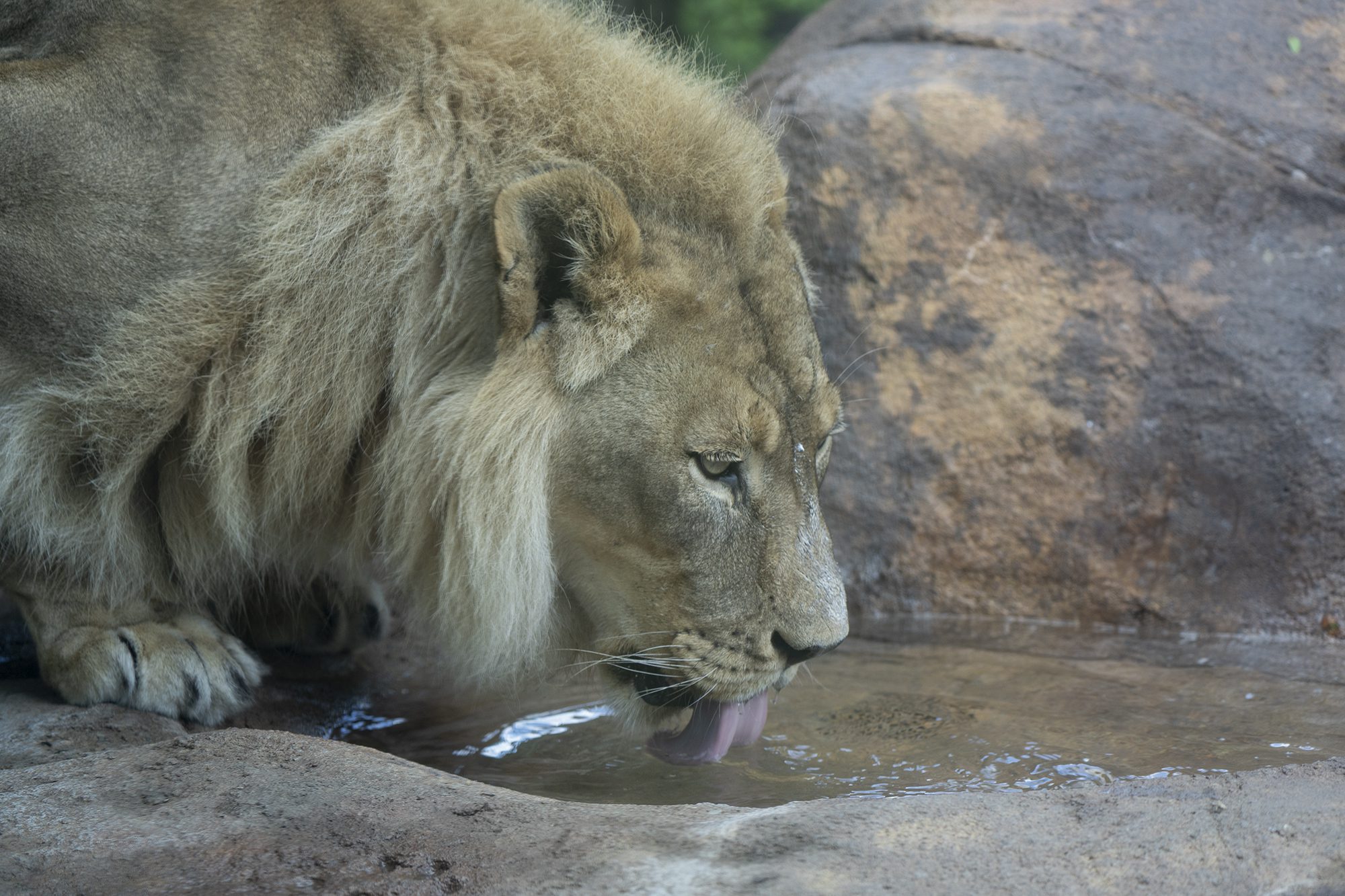Zuri, an 18-year-old female lion at Topeka Zoo and Conservation Center in Kansas, USA, has sprouted a mane like a male. Lions are normally famous for their sexual dimorphism with the males typically sporting the big brown manes that make them worthy to be the King of Pride Rock. Most of the time female lions do not have manes and instead are a pale sandy yellow all over. Zuri, however, is one of the few exceptions.
Zuri lived with a male lion Avus until October 23, 2020, when he passed away. He was the only male of Topeka’s three-lion pride. After his death keepers began to notice that Zuri had started growing a mane in a similar way to an adult male. The keepers say that Zuri is a dominant female lion, and while her mane is unusual, it is nothing like a typical adult male mane being shorter and less full. She does however have a fuzzy mohawk.

Check out that mohawk. Image courtesy of Topeka Zoo & Conservation Center
“It’s extremely rare,” Shanna Simpson, animal curator at Topeka Zoo, told NPR. “We had never even heard about this happening until we saw Zuri.”
There are a few possible explanations for Zuri’s hair growth. However, the idea that Zuri’s mane was triggered by the loss of Avus does not hold water with Kris Everatt, a conservation scientist at wild cat conservation organization Panthera “I don’t think there’s really any kind of evolutionary [reason for this], either lack of males or too much competition with other females or anything like that…. I think it’s just a random event,” he told Live Science.
It’s not the first time a female lion has grown a healthy mane of fur either. In Botswana, five females were shown to grow manes, and one even exhibited male-like behavior such as roaring and mounting other females. The suggested explanation for this was unusually high levels of testosterone within the pride, though no official hormone tests were carried out on the wild females.
In 2017, an 18-year-old lion named Bridget began to grow a mane at Oklahoma City Zoo. However, after investigations into her health, the care team found a tumor on her adrenal gland. The tumor caused increased levels of hormones such as cortisol and androstenedione that were shown in blood tests carried out on Bridget. This tumor was suspected to be the reason behind her mane growth.
Typically males grow a mane between 18 months or two years old as they reach sexual maturity. It has been found that male lions that are neutered do not grow a mane, though. One further explanation for Zuri’s new hirsute nature is her age. Typically wild lions live for 15 or 16 years and 18 is certainly pushing the upper limit even for a captive animal. Her mane growth might be explained by changing hormone levels as she ages.
Fortunately, the team reports she is in good overall health with no signs of illness.
Source Link: Zuri The 18-Year-Old Female Lion At Kansas Zoo Grows A Mane